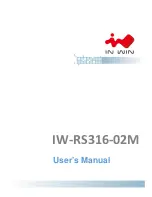
©
National Instruments Corporation
7
PXI-1000B AC Power Supply Shuttle Installation Guide
Connecting Safety Ground
Warning
The PXI-1000B AC power supply shuttle is designed with a three-position
NEMA 15-5 style plug that connects the ground line to the chassis ground. To minimize
shock hazard, make sure your electrical power outlet has an appropriate earth safety ground
that is connected whenever you power up the chassis.
If your power outlet does not have an appropriate ground connection, you
must connect the premise wire safety ground to the chassis grounding
screw on the rear panel. See Figure 2 for the chassis grounding screw
location. To connect the safety ground, complete the following steps:
1.
Connect a 16 AWG (1.3 mm) wire to the chassis grounding screw
using a toothed grounding lug. This grounding wire must have green
insulation with a yellow stripe or must be noninsulated (bare).
2.
Attach the opposite end of the grounding wire to permanent earth
ground using toothed washers or a toothed lug.
Connecting to Power Source and Testing Power Up
Caution
Remove all PXI modules from the PXI-1000B chassis prior to performing the
first power on test.
1.
Attach the appropriate power cord to the rear AC inlet and an electrical
power outlet.
2.
The power switch turns on the chassis or places it in standby mode.
Turn the power switch to the On position (if not already on). Observe
that all fans become operational.
3.
You can use a digital voltmeter to ensure all voltage levels in your
PXI-1000B are within the allowable limits.
Caution
When connecting digital voltmeter probes to the rear D-sub connector, be careful
not to short the probe leads together. Doing so could damage the power supply.
Referring to Table 2, connect one lead of the voltmeter to a supply pin
on the remote power monitoring connector (9-pin D-sub) on the rear
panel. Refer to Table 3 for a pinout diagram of the remote power
monitoring connector. Connect the reference lead of the voltmeter to
one of the ground pins. Compare each voltage reading to the values
listed in Table 2.
Note
Use the rear-panel D-sub connector to check voltages only. Do not use the connector
to supply power to external devices.






















